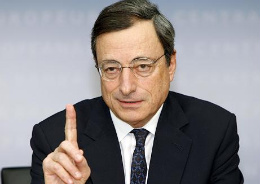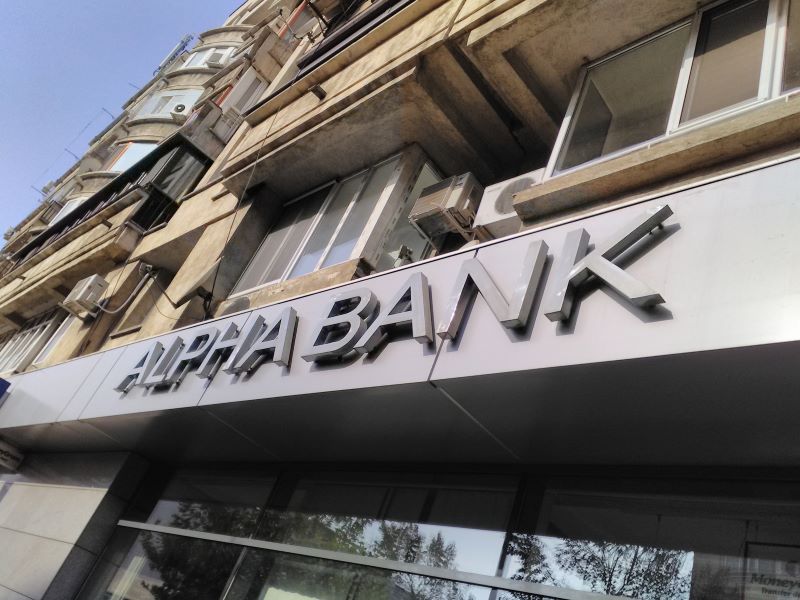Mario Draghi, President of the ECB: Introductory statement to the press conference

Introductory statement to the press conferencernMario Draghi, President of the ECB,rnVítor Constâncio, Vice-President of the ECB,rnFrankfurt am Main, 8 March 2012rnrnLadies and gentlemen, the Vice-President and I are very pleased to welcome you to our press conference. We will now report on the outcome of today’s meeting of the Governing Council.rnrnBased on our regular economic and monetary analyses, we decided to keep the key ECB interest rates unchanged. The information that has become available since the beginning of February has confirmed our previous assessment of the outlook for economic activity. Available survey indicators confirm signs of a stabilisation in the euro area economy. However, the economic outlook is still subject to downside risks. Owing to rises in energy prices and indirect taxes, inflation rates are now likely to stay above 2% in 2012, with upside risks prevailing. Nevertheless, we expect price developments to remain in line with price stability over the policy-relevant horizon. The underlying pace of monetary expansion remains subdued, consistent with contained inflationary pressures over the medium term.rnrnLooking ahead, we are firmly committed to maintaining price stability in the euro area, in line with our mandate. To this end, the continued firm anchoring of inflation expectations – in line with our aim of maintaining inflation rates below, but close to, 2% over the medium term – is of the essence.rnrnOver recent months, a wide range of additional non-standard monetary policy measures has been implemented by the Eurosystem. These measures, including in particular two three-year longer-term refinancing operations, were decided upon against the background of exceptional circumstances in the last quarter of 2011. The first impact of these measures has been positive. Together with fiscal consolidation and stepped-up structural reforms in several euro area countries, as well as progress towards a stronger euro area economic governance framework, they have contributed to a significant improvement in the financial environment over recent months. We expect that the three-year longer-term refinancing operations will provide further support for the ongoing stabilisation in financial markets and, in particular, for lending activity in the euro area. All our non-standard monetary policy measures are temporary in nature. Furthermore, all the necessary tools to address potential upside risks to medium-term price stability are fully available.rnrnLet me now explain our assessment in greater detail, starting with the economic analysis. Real GDP contracted by 0.3% in the euro area in the fourth quarter of 2011. According to recent survey data, there are signs of a stabilisation in economic activity, albeit still at a low level. Looking ahead, we expect the euro area economy to recover gradually in the course of this year. The outlook for economic activity should be supported by foreign demand, the very low short-term interest rates in the euro area, and all the measures taken to foster the proper functioning of the euro area financial sector. However, the remaining tensions in euro area sovereign debt markets and their impact on credit conditions, as well as the process of balance sheet adjustment in the financial and non-financial sectors, are expected to continue to dampen the underlying growth momentum.rnrnThis assessment is also reflected in the March 2012 ECB staff macroeconomic projections for the euro area, which foresee annual real GDP growth in a range between -0.5% and 0.3% in 2012 and between 0.0% and 2.2% in 2013. Compared with the December 2011 Eurosystem staff macroeconomic projections, the ranges have been shifted slightly downwards.rnrnThis outlook remains subject to downside risks. They notably relate to a renewed intensification of tensions in euro area debt markets and their potential spillover to the euro area real economy. Downside risks also relate to further increases in commodity prices.rnrnEuro area annual HICP inflation was 2.7% in February 2012, according to Eurostat’s flash estimate, slightly up from 2.6% in January. Looking ahead, inflation is now likely to stay above 2% in 2012, mainly owing to recent increases in energy prices, as well as recently announced increases in indirect taxes. On the basis of current futures prices for commodities, annual inflation rates should fall again to below 2% in early 2013. Looking further ahead, in an environment of modest growth in the euro area and well-anchored long-term inflation expectations, underlying price pressures should remain limited.rnrnThe March 2012 ECB staff macroeconomic projections for the euro area foresee annual HICP inflation in a range between 2.1% and 2.7% in 2012 and between 0.9% and 2.3% in 2013. In comparison with the December 2011 Eurosystem staff macroeconomic projections, the ranges for HICP inflation have been shifted upwards, notably the range for 2012.rnrnRisks to projected HICP inflation rates in the coming years are seen to be still broadly balanced, with upside risks in the near term mainly stemming from higher than expected oil prices and indirect tax increases. However, downside risks continue to exist owing to weaker than expected developments in economic activity.rnrnThe monetary analysis indicates that the underlying pace of monetary expansion remains subdued. The annual growth rate of M3 was 2.5% in January 2012, up from 1.5% in December 2011. Loan growth to the private sector also remains subdued. However, its annual rate (adjusted for loan sales and securitisation) picked up slightly in January to 1.5% year on year from 1.2% in December.rnrnThe annual growth rates of loans to non-financial corporations and loans to households (adjusted for loan sales and securitisation) stood at 0.8% and 2.1% respectively in January. The volume of MFI loans to non-financial corporations declined only slightly in January, following the pronounced decline in December. By contrast, the flow of loans to households in January was positive.rnrnFollowing the signs of improvement in the financial environment, it is essential for banks to strengthen their resilience further, including by retaining earnings. The soundness of banks’ balance sheets will be a key factor in facilitating an appropriate provision of credit to the economy.rnrnTo sum up, the economic analysis indicates that price developments should remain in line with price stability over the medium term. A cross-check with the signals from the monetary analysis confirms this picture.rnrnLooking ahead, in order to deliver a favourable environment for sustainable growth and to support confidence and competitiveness, the Governing Council stresses the urgent need for governments to make further progress towards restoring sound fiscal positions and implementing the structural reform agenda. Regarding fiscal consolidation, many governments in the euro area are making progress. Continuing with comprehensive fiscal consolidation and complying with all commitments remains essential. In this respect, the 2012 European Semester should be used to enforce rigorously the reinforced fiscal surveillance mechanism. Equally important are structural reforms to increase the adjustment capacity and competitiveness of euro area countries and to strengthen growth prospects and job creation. In this area, more progress is desirable. The Governing Council strongly welcomes the European Commission’s Alert Mechanism Report on macroeconomic imbalances and expects the proposed in-depth country reviews to actively support the reform processes under way in euro area countries.rnrnWe are now at your disposal for questions.
Comentarii
Nu există comentarii pentru această știre.
Adauga un comentariu
Alte stiri din categoria: ENGLISH
Neutral interest rate in Romania
The neutral nominal rate in Romania has been falling since the start of inflation targeting in 2005. The Taylor Rule clearly shows that interest rates peaked in 2022 and have been on a clear downward path ever since.Furthermore, the model estimates a long-term neutral nominal rate of around 3.9%, which is the equivalent of approx. 1.4% real.Using a more sophisticated model (i.e. New York FED’S HLW model), the real neutral interest rate in Romania is estimated currently at around 1.5% (1.7% 2023 average) and the historical mean at 1.2%.This implies a neutral nominal rate between 4.00% and 4.50%. In the past decade, the NBR real effective rate was below the neutral rate and only over the past year climbed above the neutral mark.Source: Erste Bank
Merger of Alpha Bank and UniCredit Bank Romania
Press Release:"Alpha Services and Holdings announces a strategic partnership with UniCredit in RomaniaMerger of Alpha Bank Romania and UniCredit Bank Romania and creation of third largest bank in Romania by... detalii
National Bank of Romania (NBR) Board decisions on monetary policy
NBR Board decisions on monetary policyIn its meeting of 4 April 2023, the Board of the National Bank of Romania decided:• to keep the monetary policy rate at 7.00 percent per annum;• to leave unchanged the lending (Lombard) facility rate at 8.00 percent per annum and the deposit facility rate at 6.00 percent per annum;• to keep the existing levels of minimum reserve requirement ratios on both leu- and foreign currency-denominated liabilities of credit institutions.The annual inflation rate went down to 15.52 percent in February 2023, from 16.37 percent in December 2022, relatively in line with forecasts. The decrease was mainly driven by the sizeable drop in the dynamics of fuel and electricity prices, under the impact of significant base effects and the change made to the energy price capping and compensation scheme starting 1... detalii
ING posts 2022 net result of €3,674 million, dividend of €0.389 per share
ING press release:ING posts FY2022 net result of €3,674 million,proposed final 2022 dividend of €0.389 per share 4Q2022 profit before tax of €1,711 million; CET1 ratio remains strong at 14.5%•Profit before tax up 29% on 4Q2021 and 24% on 3Q2022, mainly driven by higher income•Higher net interest income, as a further increase in liability margins helped offset TLTRO impact this quarter•Risk costs declined to 17 bps of average customer lending Full-year 2022 net result of €3,674 million, supported by growing customer base and increase in lending and deposits•On a full-year basis, our primary customer base grew by 585,000•Net core lending growth of €18 billion and net core deposits growth of €25 billion in 2022•Net result of €3,674 million in a challenging year; proposed final 2022 dividend of €0.389 per share CEO statement“Looking back, 2022 was... detalii
 BT Financial Results as at 30 September 2022
BT Financial Results as at 30 September 2022
 No progress for the time being in Revolut becoming a subsidiary bank
No progress for the time being in Revolut becoming a subsidiary bank
 Risks may arise with some cross-border electronic invoice and card services
Risks may arise with some cross-border electronic invoice and card services
 ING posts 2Q 2022 net result of €1,178 million, supported by increased income and modest risk costs
ING posts 2Q 2022 net result of €1,178 million, supported by increased income and modest risk costs
 Sale of Raiffeisenbank (Bulgaria) EAD to KBC Bank closed
Sale of Raiffeisenbank (Bulgaria) EAD to KBC Bank closed
 Willi Cernko appointed new CEO of Erste Group
Willi Cernko appointed new CEO of Erste Group
 Erste Group CEO Bernd Spalt decides not to renew contract
Erste Group CEO Bernd Spalt decides not to renew contract
 First Bank launches the new cards collection
First Bank launches the new cards collection
 NBR Board decisions on monetary policy
NBR Board decisions on monetary policy
 Reflections on 20 years of the euro: joint article by Eurogroup members
Vezi toate stirile
Reflections on 20 years of the euro: joint article by Eurogroup members
Vezi toate stirile
Criza COVID-19
- In majoritatea unitatilor BRD se poate intra fara certificat verde
- La BCR se poate intra fara certificat verde
- Firmele, obligate sa dea zile libere parintilor care stau cu copiii in timpul pandemiei de coronavirus
- CEC Bank: accesul in banca se face fara certificat verde
- Cum se amana ratele la creditele Garanti BBVA
Topuri Banci
- Topul bancilor dupa active si cota de piata in perioada 2022-2015
- Topul bancilor cu cele mai mici dobanzi la creditele de nevoi personale
- Topul bancilor la active in 2019
- Topul celor mai mari banci din Romania dupa valoarea activelor in 2018
- Topul bancilor dupa active in 2017
Asociatia Romana a Bancilor (ARB)
- Băncile din România nu au majorat comisioanele aferente operațiunilor în numerar
- Concurs de educatie financiara pentru elevi, cu premii in bani
- Creditele acordate de banci au crescut cu 14% in 2022
- Romanii stiu educatie financiara de nota 7
- Gradul de incluziune financiara in Romania a ajuns la aproape 70%
ROBOR
- ROBOR: ce este, cum se calculeaza, ce il influenteaza, explicat de Asociatia Pietelor Financiare
- ROBOR a scazut la 1,59%, dupa ce BNR a redus dobanda la 1,25%
- Dobanzile variabile la creditele noi in lei nu scad, pentru ca IRCC ramane aproape neschimbat, la 2,4%, desi ROBOR s-a micsorat cu un punct, la 2,2%
- IRCC, indicele de dobanda pentru creditele in lei ale persoanelor fizice, a scazut la 1,75%, dar nu va avea efecte imediate pe piata creditarii
- Istoricul ROBOR la 3 luni, in perioada 01.08.1995 - 31.12.2019
Taxa bancara
- Normele metodologice pentru aplicarea taxei bancare, publicate de Ministerul Finantelor
- Noul ROBOR se va aplica automat la creditele noi si prin refinantare la cele in derulare
- Taxa bancara ar putea fi redusa de la 1,2% la 0,4% la bancile mari si 0,2% la cele mici, insa bancherii avertizeaza ca indiferent de nivelul acesteia, intermedierea financiara va scadea iar dobanzile vor creste
- Raiffeisen anunta ca activitatea bancii a incetinit substantial din cauza taxei bancare; strategia va fi reevaluata, nu vor mai fi acordate credite cu dobanzi mici
- Tariceanu anunta un acord de principiu privind taxa bancara: ROBOR-ul ar putea fi inlocuit cu marja de dobanda a bancilor
Statistici BNR
- Deficitul contului curent, creștere cu 16% în ianuarie 2025
- Deficitul contului curent, aproape 30 miliarde euro în 2024
- Deficitul contului curent, aproape 20 miliarde euro după primele nouă luni
- Deficitul contului curent, aproape 18 miliarde euro după primele opt luni
- Deficitul contului curent, peste 9 miliarde euro pe primele cinci luni
Legislatie
- Decizia nr.105/2007 privind raportarea la Biroul de Credit
- Legea nr. 311/2015 privind schemele de garantare a depozitelor şi Fondul de garantare a depozitelor bancare
- Rambursarea anticipata a unui credit, conform OUG 50/2010
- OUG nr.21 din 1992 privind protectia consumatorului, actualizata
- Legea nr. 190 din 1999 privind creditul ipotecar pentru investiții imobiliare
Lege plafonare dobanzi credite
- Care este dobanda maxima la un credit IFN?
- BNR propune Parlamentului plafonarea dobanzilor la creditele bancilor intre 1,5 si 4 ori peste DAE medie, in functie de tipul creditului; in cazul IFN-urilor, plafonarea dobanzilor nu se justifica
- Legile privind plafonarea dobanzilor la credite si a datoriilor preluate de firmele de recuperare se discuta in Parlament (actualizat)
- Legea privind plafonarea dobanzilor la credite nu a fost inclusa pe ordinea de zi a comisiilor din Camera Deputatilor
- Senatorul Zamfir, despre plafonarea dobanzilor la credite: numai bou-i consecvent!
Anunturi banci
- BCR este inchisa vineri, 18 aprilie, si luni, 21 aprilie
- Cererile de transfer de bani prin Whatsapp, Telegram, Messenger sunt fraude
- Un telefon sau mesaj care pare de la banca poate fi frauda
- Cererea unui ajutor in bani poate fi o inselaciune
- Cate reclamatii primeste Intesa Sanpaolo Bank si cum le gestioneaza
Analize economice
- Inflația anuală, redusă la 4,86%
- Comerțul, a cincea lună consecutivă de ajustare a creșterii
- Pensia reală a crescut cu peste 15% anul trecut
- Deficitul bugetar, rezultat slab după primele două luni
- Deficit comercial în creștere cu 38,5% pe ianuarie 2025
Ministerul Finantelor
- Deficitul bugetar, din ce în ce mai mare la început de an
- -8,65% din PIB, deficit bugetar pe anul 2024
- Datoria publică, 51,4% din PIB la mijlocul anului
- Deficit bugetar de 3,6% din PIB după prima jumătate a anului
- Deficit bugetar de 3,4% din PIB după primele cinci luni ale anului
Biroul de Credit
- FUNDAMENTAREA LEGALITATII PRELUCRARII DATELOR PERSONALE IN SISTEMUL BIROULUI DE CREDIT
- BCR: prelucrarea datelor personale la Biroul de Credit
- Care banci si IFN-uri raporteaza clientii la Biroul de Credit
- Ce trebuie sa stim despre Biroul de Credit
- Care este procedura BCR de raportare a clientilor la Biroul de Credit
Procese
- ANPC pierde un proces cu Intesa si ARB privind modul de calcul al ratelor la credite
- Un client Credius obtine in justitie anularea creditului, din cauza dobanzii prea mari
- Hotararea judecatoriei prin care Aedificium, fosta Raiffeisen Banca pentru Locuinte, si statul sunt obligati sa achite unui client prima de stat
- Decizia Curtii de Apel Bucuresti in procesul dintre Raiffeisen Banca pentru Locuinte si Curtea de Conturi
- Vodafone, obligata de judecatori sa despagubeasca un abonat caruia a refuzat sa-i repare un telefon stricat sau sa-i dea banii inapoi (decizia instantei)
Stiri economice
- Deficitul comercial pe primele două luni ale anului, majorat cu 35%
- România, campioana europeană la șomajul tinerilor
- România, pe locul trei în UE la creșterea costului salarial în T4 2024
- Producția industrială, scădere conjuncturală în ianuarie 2025
- Datoria publică, 54,6% din PIB la finele lui 2024
Statistici
- România, marginal peste Estonia la inflația anuală
- România, a doua țară din UE ca pondere a salariaților cu venituri mici
- România, pe locul trei în UE la creșterea costului muncii în T2 2024
- Cheltuielile cu pensiile - România, pe locul 19 în UE ca pondere în PIB
- Dobanda din Cehia a crescut cu 7 puncte intr-un singur an
FNGCIMM
- Programul IMM Invest continua si in 2021
- Garantiile de stat pentru credite acordate de FNGCIMM au crescut cu 185% in 2020
- Programul IMM invest se prelungeste pana in 30 iunie 2021
- Firmele pot obtine credite bancare garantate si subventionate de stat, pe baza facturilor (factoring), prin programul IMM Factor
- Programul IMM Leasing va fi operational in perioada urmatoare, anunta FNGCIMM
Calculator de credite
- ROBOR la 3 luni a scazut cu aproape un punct, dupa masurile luate de BNR; cu cat se reduce rata la credite?
- In ce mall din sectorul 4 pot face o simulare pentru o refinantare?
Noutati BCE
- Dobanda la euro scade la 2,25%
- Acord intre BCE si BNR pentru supravegherea bancilor
- Banca Centrala Europeana (BCE) explica de ce a majorat dobanda la 2%
- BCE creste dobanda la 2%, dupa ce inflatia a ajuns la 10%
- Dobânda pe termen lung a continuat să scadă in septembrie 2022. Ecartul față de Polonia și Cehia, redus semnificativ
Noutati EBA
- Bancile romanesti detin cele mai multe titluri de stat din Europa
- Guidelines on legislative and non-legislative moratoria on loan repayments applied in the light of the COVID-19 crisis
- The EBA reactivates its Guidelines on legislative and non-legislative moratoria
- EBA publishes 2018 EU-wide stress test results
- EBA launches 2018 EU-wide transparency exercise
Noutati FGDB
- Banii din banci sunt garantati, anunta FGDB
- Depozitele bancare garantate de FGDB au crescut cu 13 miliarde lei
- Depozitele bancare garantate de FGDB reprezinta doua treimi din totalul depozitelor din bancile romanesti
- Peste 80% din depozitele bancare sunt garantate
- Depozitele bancare nu intra in campania electorala
CSALB
- Sistemul bancar romanesc este deosebit de bine pregatit pentru orice fel de socuri
- La CSALB poti castiga un litigiu cu banca pe care l-ai pierde in instanta
- Negocierile dintre banci si clienti la CSALB, in crestere cu 30%
- Sondaj: dobanda fixa la credite, considerata mai buna decat cea variabila, desi este mai mare
- CSALB: Romanii cu credite caută soluții pentru reducerea ratelor. Cum raspund bancile
First Bank
- Ce trebuie sa faca cei care au asigurare la credit emisa de Euroins
- First Bank este reprezentanta Eurobank in Romania: ce se intampla cu creditele Bancpost?
- Clientii First Bank pot face plati prin Google Pay
- First Bank anunta rezultatele financiare din prima jumatate a anului 2021
- First Bank are o noua aplicatie de mobile banking
Noutati FMI
- FMI: criza COVID-19 se transforma in criza economica si financiara in 2020, suntem pregatiti cu 1 trilion (o mie de miliarde) de dolari, pentru a ajuta tarile in dificultate; prioritatea sunt ajutoarele financiare pentru familiile si firmele vulnerabile
- FMI cere BNR sa intareasca politica monetara iar Guvernului sa modifice legea pensiilor
- FMI: majorarea salariilor din sectorul public si legea pensiilor ar trebui reevaluate
- IMF statement of the 2018 Article IV Mission to Romania
- Jaewoo Lee, new IMF mission chief for Romania and Bulgaria
Noutati BERD
- Creditele neperformante (npl) - statistici BERD
- BERD este ingrijorata de investigatia autoritatilor din Republica Moldova la Victoria Bank, subsidiara Bancii Transilvania
- BERD dezvaluie cat a platit pe actiunile Piraeus Bank
- ING Bank si BERD finanteaza parcul logistic CTPark Bucharest
- EBRD hails Moldova banking breakthrough
Noutati Federal Reserve
- Federal Reserve anunta noi masuri extinse pentru combaterea crizei COVID-19, care produce pagube "imense" in Statele Unite si in lume
- Federal Reserve urca dobanda la 2,25%
- Federal Reserve decided to maintain the target range for the federal funds rate at 1-1/2 to 1-3/4 percent
- Federal Reserve majoreaza dobanda de referinta pentru dolar la 1,5% - 1,75%
- Federal Reserve issues FOMC statement
Noutati BEI
- BEI a redus cu 31% sprijinul acordat Romaniei in 2018
- Romania implements SME Initiative: EUR 580 m for Romanian businesses
- European Investment Bank (EIB) is lending EUR 20 million to Agricover Credit IFN
Mobile banking
- Comisioanele BRD pentru MyBRD Mobile, MyBRD Net, My BRD SMS
- Termeni si conditii contractuale ale serviciului You BRD
- Recomandari de securitate ale BRD pentru utilizatorii de internet/mobile banking
- CEC Bank - Ghid utilizare token sub forma de card bancar
- Cinci banci permit platile cu telefonul mobil prin Google Pay
Noutati Comisia Europeana
- Avertismentul Comitetului European pentru risc sistemic (CERS) privind vulnerabilitățile din sistemul financiar al Uniunii
- Cele mai mici preturi din Europa sunt in Romania
- State aid: Commission refers Romania to Court for failure to recover illegal aid worth up to €92 million
- Comisia Europeana publica raportul privind progresele inregistrate de Romania in cadrul mecanismului de cooperare si de verificare (MCV)
- Infringements: Commission refers Greece, Ireland and Romania to the Court of Justice for not implementing anti-money laundering rules
Noutati BVB
- BET AeRO, primul indice pentru piata AeRO, la BVB
- Laptaria cu Caimac s-a listat pe piata AeRO a BVB
- Banca Transilvania plateste un dividend brut pe actiune de 0,17 lei din profitul pe 2018
- Obligatiunile Bancii Transilvania se tranzactioneaza la Bursa de Valori Bucuresti
- Obligatiunile Good Pople SA (FRU21) au debutat pe piata AeRO
Institutul National de Statistica
- România, la 78% din PIB-ul mediu pe locuitor al UE
- Producția industrială, la cota -1,8% după 11 luni din 2024
- Deficitul contului curent, peste 26 miliarde euro în noiembrie 2024
- Comerțul cu amănuntul - în creștere cu 8% pe primele 10 luni
- Deficitul balanței comerciale la 9 luni, cu 15% mai mare față de aceeași perioadă a anului trecut
Informatii utile asigurari
- Data de la care FGA face plati pentru asigurarile RCA Euroins: 17 mai 2023
- Asigurarea împotriva dezastrelor, valabilă și in caz de faliment
- Asiguratii nu au nevoie de documente de confirmare a cutremurului
- Cum functioneaza o asigurare de viata Metropolitan pentru un credit la Banca Transilvania?
- Care sunt documente necesare pentru dosarul de dauna la Cardif?
ING Bank
- La ING se vor putea face plati instant din decembrie 2022
- Cum evitam tentativele de frauda online?
- Clientii ING Bank trebuie sa-si actualizeze aplicatia Home Bank pana in 20 martie
- Obligatiunile Rockcastle, cel mai mare proprietar de centre comerciale din Europa Centrala si de Est, intermediata de ING Bank
- ING Bank transforma departamentul de responsabilitate sociala intr-unul de sustenabilitate








